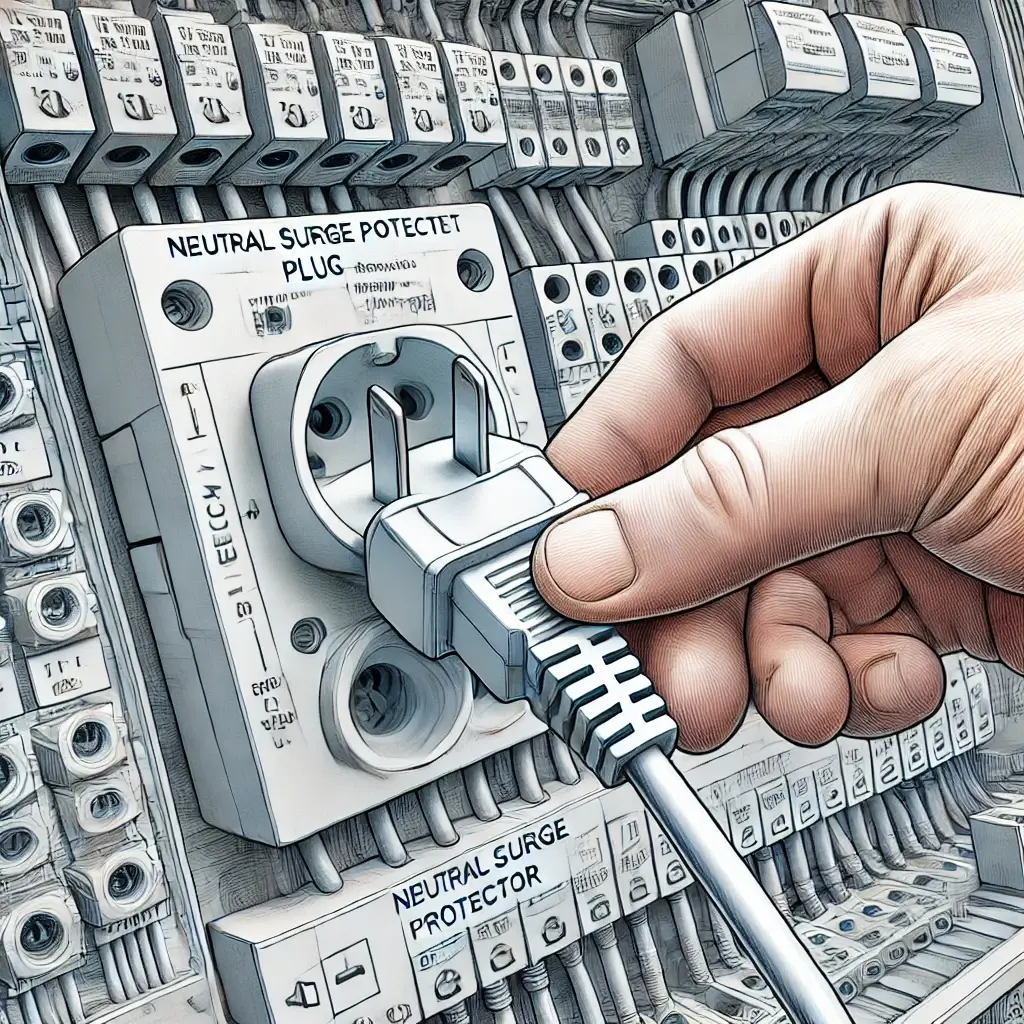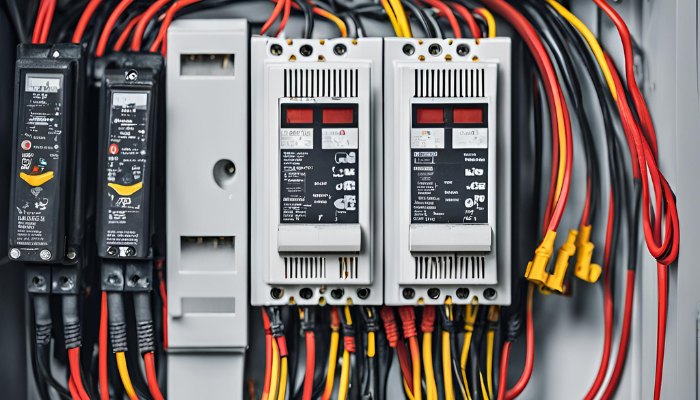Surge protection devices (SPDs) are an effective way to protect your home or building from unexpected power surges. These devices prevent damage to electrical systems and connected devices by diverting excessive voltage away from sensitive components.
Installing a surge protection device may seem daunting, but with a little guidance, it can be a simple task that can save you potential headaches and costly repairs in the future.
Table of Contents
ToggleTypes of Surge Protectors
Surge protectors come in many forms, each suitable for different installation scenarios. In this article, we will focus on the two main types used in power strips:
- Neutral plug
- Surge protectors with wires
Neutral Plug
A plug-in neutral surge protector is a compact and efficient option. It snaps directly into the electrical panel, requiring no additional wiring.
This type of surge protector takes up two slots, similar to a double-pole circuit breaker. Its main advantage is that there are no wires, making the installation process faster and cleaner.
Surge Protectors with Leads
Surge protectors with lead wires are a little more complicated to install because they require a wire connection. Nonetheless, they are just as effective at protecting your home. One popular model is the HEP D from Square D. This unit has lead wires but still falls into the Type 1 surge protector category because of its built-in overcurrent protection.
Other Common Types of Surge Protectors

Type 1 Surge Protectors
Type 1 surge protectors are installed on the line side of the main circuit breaker and protect against surges from external sources such as lightning strikes. These devices often have built-in overcurrent protection.
A plug-on neutral surge protector is a good example of a Type 1 device. It is integrated directly into the panel, eliminating the need for wires, and greatly simplifying the installation process.
Type 2 Surge Protectors
Type 2 surge protectors are installed on the roadside of the main circuit breaker and require connection to an additional circuit breaker. These devices protect against surges from internal power sources such as appliances turning on and off.
Click to learn: Type 1 Vs Type 2 Surge Protector
Type 3 and Type 4 Surge Protectors
Type 3 and Type 4 surge protectors are typically used within a home or building. They provide localized protection for specific equipment.
Installing a Neutral Surge Protector Plug

The neutral surge protector is designed to be easy to use and does not require additional wires when installed. It can be simply snapped into the distribution board. It occupies two slots and is installed similarly to a double-pole circuit breaker.
In addition, this protector has built-in integral overcurrent protection, reducing the need for additional circuit breakers, and thereby providing greater safety. Before installing the neutral surge protector plug, you should prepare these tools:
- Neutral surge protector plug: Make sure to purchase a product that meets the standards.
- Screwdriver: Used to fix the plug.
- Cable: A cable that meets the requirements of the protector plug.
After preparing these props, you can complete the installation according to the following steps.
Power off: Make sure the power is turned off to avoid the risk of electric shock.
Choose an installation location: Choose a location close to the power outlet for easy wiring.
Wire stripping: Use a wire stripping tool to strip the outer insulation layer of the cable to expose the neutral wire inside (usually blue or white).
Connect the cable: Open the wiring port of the neutral surge protector plug, insert the neutral wire into the corresponding wiring port, and fix it with a screw. Make sure the wire ends are firmly connected and not loose.
Fix the plug: Fix the plug to the wall or other suitable location to ensure that it is not loose.
Inspect and test: Power on and test the neutral line surge protector plug to ensure that it is working properly. You can use a test instrument to confirm whether the surge protection function is normal.
Install a Surge Protector with a Wire
A surge protector with a wire protects electrical equipment from damage caused by surges and transient overvoltages, prolongs equipment life, and improves system stability.
It also provides grounding protection to prevent risks such as electrical fires. Before installing a surge protector with a wire, you should prepare the following tools in advance:
- Surge protector: Make sure to choose a surge protector that meets electrical regulations.
- Wire: Choose the appropriate wire according to the specifications of the surge protector.
- Screwdriver: Used for wiring and fixing the protector.
- Electrician tools: Such as wire strippers, wire crimping pliers, etc.
You can continue your installation journey after preparing the tools.
Power off: Make sure to disconnect the power supply before installation to avoid the risk of electric shock.
Choose an installation location: It is usually installed near the main distribution board for easy wiring.
Prepare the wires: Cut the wires to the appropriate length as needed and use wire strippers to remove the appropriate amount of insulation to expose the conductors.
Connect the wires: Connect the input terminals of the surge protector (usually marked L/N) to the phase and neutral wires of the main power supply. Connect the ground terminal of the surge protector (usually marked with G or the ground symbol) to the ground busbar of the distribution board. Make sure the wiring is firm and avoid loosening.
Fix the protector: Fix the surge protector in the predetermined position to ensure a firm installation.
Power-on test: After the installation is complete, reconnect the power supply to test whether the surge protector is working properly. You can use a test instrument to detect the status indicator or other indicator device of the surge protector.
Safety Tips
Ensure power is off: Make sure the power is off during the entire installation process.
Use qualified components: Select surge protectors and wires that meet the standards to ensure the safety and reliability of the equipment.
Final Thoughts on Installing Surge Protectors
Installing surge protectors is possible with the right knowledge. Understanding surge protector types, warranties, and proper installation techniques can ensure electrical safety in your home.
For a more in-depth look at surge protectors, stay tuned to the MOREDAYwebsite. Stay up to date with the latest information and protect your home from unexpected power surges.
Related reading: How to Size Surge Protection Device


